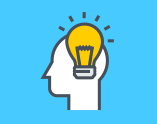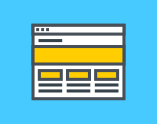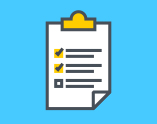11 Digital Literacy Myths, Debunked

There are a number of misconceptions about what digital literacy is and why it matters. Veteran teachers have faced pressure to not only ensure that their students are digitally literate, but also to be on the cutting edge of digital literacy themselves. However, what constitutes a digitally literate teacher is often up for debate. Without a clear definition, many teachers find the process of becoming digitally literate both confusing and overwhelming, especially as the pace of innovation frequently makes many technologies outdated as soon as they are learned.
Still, digital literacy skills for teachers are crucial. In this article, we will first pin down exactly what digital literacy is and then work to debunk a number of common myths.
What Digital Literacy Means and Why It Matters
Digital literacy can be defined in several different ways. At the most basic level, digitally literate people know how to use technologies they are presented with. At a higher level, digital literacy is far more nuanced.
The Common Core State Standards define digital literacy for students as the following:
Students employ technology thoughtfully to enhance their reading, writing, speaking, listening, and language use. They tailor their searches online to acquire useful information efficiently, and they integrate what they learn using technology with what they learn offline.
In demonstrating that they know how to analyze information online, students are exhibiting key critical thinking skills. They’re showing that they can evaluate sources, hunt for multiple perspectives, navigate across various kinds of media, and integrate their found digital knowledge into their base of offline skills, knowledge, capabilities, and ideas.
As defined in the Future Lab’s “Digital Literacy Across the Curriculum,” digital literacy touches on and integrates with the following areas:
- Functional skills
- Creativity
- Critical thinking and evaluation
- Cultural and social understanding
- Collaboration
- Ability to find and select information
- Effective communication
- Internet safety
This broader definition should come as welcome news. Though today’s students are “digital natives,” they are not by the standards above considered to be digitally literate on their own. In fact, it is teachers doing what they do best — teaching students to think critically, evaluate and question the sources before them, and be creative with mediums and ideas — that make students digitally literate. Viewed in that light, teachers need not fear students who may outstrip them in terms of functional skills — they can learn from these students without fear of losing their leadership mantle because teachers are able to place that technology into the proper context for deep learning.
11 Common Myths About Digital Literacy
We interviewed a number of teachers across the United States about what they felt were the biggest misconceptions surrounding teacher and student digital literacy and classroom technology. Here are their answers, along with while some real-life applications of digital tools being used in classrooms across the country.
- Digitally literate teachers know everything
- All digital tools are created equal
- Teaching digital literacy interrupts traditional teaching
- Digital literacy is a separate skill
- Digital literacy is only about functionality
- Digital natives are inherently digitally literate
- Technology turns students into zombies
- Handing over technology is all that matters
- You have to be a digital expert to teach digital skills
- Teachers don’t have time for technology
- Cell phones in class equal chaos
Myth 1: Digitally literate teachers know everything about all technology.
Jason Sanders, an instructional technologist for the Northwest Independent School District in Texas, defines digital literacy as “knowing what digital tool you need to use and possessing the ability to figure out how to use it on your own. It’s a matter of problem-solving.”
Just as students have different reading levels, teachers vary in their levels of digital literacy. Knowing how to code or being on the cutting edge of every single app is not what matters.
Rather, what matters is having enough familiarity with and knowledge of technologies so that they are reasonably easy to navigate. A digitally literate teacher must also be adept at picking technology that’s right for their classroom, guiding students through its use, and using that technology to unlock critical thinking and creativity.
“For me, it’s not about tools or necessarily even tech, but about mindset,” said Drew Robinson, an instructional technology coach for Tulsa Public Schools in Oklahoma. “It’s more about the verbs and less about the nouns. Don’t tell me that you know how to use Microsoft Word and PowerPoint, but that you know that your kids need to create and produce higher-end skills.”
For example, a digitally literate teacher might assign their students a podcast project and introduce them to the various podcast platforms they can use, without knowing every single feature of what each platform offers. Again, it’s literacy, not expertise.
“It’s not just being comfortable with technology; it’s being comfortable with all that technology can do, like instant feedback, real-time collaboration and teaching kids to be comfortable in these new environments,” said Brett Erenberg, a technology integration liaison for Valhalla Schools in New York.
Myth 2: All technology is great.
Most educators know this one all too well. A new technology comes out, and suddenly it’s district-mandated that they change everything about the way they teach in order to take advantage of it.
Technology itself cannot transform learning. In fact, any given piece of technology has low value when teachers don’t understand it or why they’re being made to use it. Technology can help engage students and connect them with a range of perspectives and resources. But it takes teachers to implement that technology, and it is teachers who know best what will and won’t work in their classrooms.
It’s also important to note that technology can’t replace human connections. It should be used to strengthen those connections.
“Technology changes the role of a teacher,” said Dianna Albert, an educational tech coordinator at St. John Vianney School in San Jose, California. “With it, the teacher becomes more of a facilitator. They say, ‘These are my students, I know where their weaknesses and strengths are, and this is the software that will be more useful for them today.’ Technology doesn’t replace the need for students to know that they’re loved and making progress. It doesn’t replace having someone say, ‘You did a great job today.’ “
Robinson agrees. “Relationships are critical to education,” she said. “Technology can’t replace those relationships.”
Myth 3: Digital literacy gets in the way of traditional teaching methods.
Our debunking of Myth No. 2 shouldn’t be taken to mean that technology is in any way at odds with traditional teaching methods. The best technology draws on those same principles and empowers teachers to take traditional methods to the next level. While there is always room for re-evaluation of pedagogical approaches, technology should support what teachers have always done best, rather than getting in the way.
Christy Fennewald, a school technology integration coordinator at St. Stephens’ Episcopal School in Austin, Texas, and a former English teacher, expanded on this idea:
“[Digital literacy] does not replace traditional literacies. Rather, it is another form of media under the literacy,” she said. “At one time, we needed all students to be literate in machinery or agriculture. It was necessary for their survival and future. Digital literacy is the same. It is not replacing reading and writing and arithmetic. It is the same — applied only to new media.”
Myth 4: Digital literacy should be taught as a separate skill.
While there are instances in which students and teachers alike will require training in specific technologies, digital literacy itself most often does not need to be taught to students as a separate skill.
In fact, to do so removes technology from its context, and thereby limits student conceptions of what that technology can do. Instead, a digital literacy component should be worked into other kinds of assignments, both in practice and for grading purposes. A history project, for example, might include having students put together a Pinterest board for images, video and audio from a specific time period. In this way, digital literacy becomes a source for critical thinking and creativity, often drawing on social skills as students navigate group digital projects.
“Digital literacy is just literacy,” Fennewald explained. “That’s what got me into this business. As a teacher of literacy (English), I found we focused too much on one form of literacy and not all forms of literacy. Being literate means being able to communicate no matter the form. It does not require a specific set of tools. Rather, it’s a way of thinking.”
Myth 5: Digital literacy is just about functionality.
As we explored in our first myth, digital literacy isn’t just about navigating various technologies. Rather, it’s about using digital competence to:
- Find high-quality sources with varying perspectives
- Evaluate sources
- Understand how cultural contexts affect every person’s literacy
- Stay safe online
- Think critically
- Collaborate cross-culturally
- Be creative with the tools at hand or conclusions drawn
“Being literate is being able to communicate, create, think critically and collaborate across media,” Fennewald said. “Those who can do this will be the most successful.”
Myth 6: Digital natives are inherently digitally literate
Digital natives are confident when it comes to their tech literacy — and to be fair, if they’re interacting with technology regularly at home, they do have a baseline set of skills that exceed what their teachers had at the same age. But there’s a difference between shooting some video on an iPhone and making a movie, just as there has always been a difference between scribbling some notes on a pad of paper and actually sitting down to write a story or essay.
Mitchell Fairchild, a design and technology teacher in the Wayside School District in Texas and the co-founder of I.C.E.T., said that teachers often say, ” ‘Students grew up in an age of computers, so they know about all of this already.’ Well, yes, they do to an extent, but they don’t know how to use it properly.”
They may, for example, know how to surf the web and use social media, but they don’t understand that what they put out there is there forever, whether it’s an inappropriate picture, a bullying comment or even a drug reference.
Sanders expanded on this idea:
“Teachers hold this myth that all students are good with technology, when really they mostly know how to have fun. The things that they’re good at are texting, messaging, Instagramming and Tweeting. They don’t use proper grammar, don’t know how to write proper communication and communicate in the workplace, and can’t create a graph in Excel.”
Sanders used Twitter as an example. He said Twitter can be used to create personal class hashtags like “#AskScienceSanders,” which students can use to tweet questions rather than shouting them out.
However, assuming that all of today’s students are digital natives in the first place is problematic because it doesn’t consider the digital divide.
“We have a huge population of our kids that don’t have technology outside school,” said Robinson. “The very first time they see it is in the classroom, so to assume that they just know what to do is like assuming kids know how to read just because they look at a book. It’s naive to think everyone has access.”
Myth 7: Technology turns students into zombies.
It’s tempting to think of a technology-rich classroom as one in which students are glued permanently to their screens, passively watching videos and not interacting with each other. But if that’s the way any given classroom looks, well, that classroom is doing it wrong.
When done well, technology in the classroom should turn students from passive to active learners, creating — rather than receiving — information. It can often be hands-on, whether students are designing their own toys in a computer-aided design (CAD) program, building LEGO robots, or using Arduino (an open-source electronics prototyping platform) to turn their classroom into an “Internet of Things” stronghold.
Albert described one of her classes:
“In math class we have blended learning. Instead of 28 kids working on the same thing, now you have one-third working on project-based learning, one-third working on digital projects to do with the concepts, and one-third getting the attention they need from the teacher. Before, the teacher couldn’t get to each kid, but now they can really teach to the child just in how they’re using technology.”
David Smith, who works at the IT Help Desk in the Spearfish School District in South Dakota, agrees.
“Teachers that are using tech are actually getting more interaction in the classroom,” he said. With learning systems like Moodle, “teachers hand out assignments, while students can turn them in and take exams on the system. That’s a benefit for both teachers and students because the program will automatically correct work, giving students immediate feedback, and all the teacher has to do is transfer that over to the grade book. [This leaves] more time to work with students.”
Those kinds of systems open up space for teachers to remediate students who need it while letting the students who have already mastered the project work to explore and create independently.
Myth 8: Handing students the technology is all that matters.
It should be obvious why this is a myth, given all that we discussed above. Digitally literate teachers act as engaging guides as their students work with technology, challenging them to think beyond their original conceptions. On a more practical level, it is incorrect to embrace this myth because teachers will need to carefully monitor their students’ privacy and safety while using digital technology.
Oftentimes, they even need to monitor whether or not a student is on task.
“When new teachers come in,” said Fairchild, “they often assume that when they’re in the computer lab, it’s all good — hey, the kids are typing. But I’ve seen research that comes back with websites that should not be cited. The students need to be taught how to do the right thing.”
Myth 9: I have to be a digital expert to teach digital skills.
According to Robinson, a lot of teachers make this claim. They say that because they aren’t technology experts, they can’t use it in the classroom — but that’s not true.
“Nobody is an expert in technology,” Robinson says. “What you need to have is a flexible attitude — to say that didn’t work, but it’s not that I failed, it’s just that I have to tweak the process. You can’t know every single tool out there. It’s less about holding on to knowledge and more about how you access that knowledge.”
Myth 10: Teachers don’t have time to learn new technology.
This is certainly an understandable myth and concern because teachers are already stretched thin. New technology does take time to master, and that can feel especially overwhelming when there’s something new coming down the pipeline every week.
“While [classroom technology] does take time on the front end, it saves you so much time on the back end if you’re doing it correctly. My classroom last year was totally flipped,” Sanders said. “When students finished their daily work, it would just grade itself. They’d have instantaneous feedback because I’d set it up ahead of time. I’d still have to grade projects and labs, but this saved me a lot of time overall.”
This allowed Sanders much more time to be creative in his classroom. “Digital tools and learning won’t replace human critical thinking,” he said. “That’s the key factor. In a flipped class, for example, the key isn’t the video you film of yourself lecturing, it’s what the technology gives you — and that’s more time in class to utilize critical thinking and problem-solving to challenge and explore with kids.”
Fennewald agreed that this is often a misconception teachers struggle with.
“To some, it’s the world and then technology,” she said. “They view the two as separate where they should be one and the same. Because technology is a foreign thing that they have to make room for in their classroom, they struggle with the idea of digital literacy. They understand we must be literate, but do not connect the dots among new literacies. When they begin to broaden the forms of media under the literacy umbrella, they can excel.”
The problem, Smith said, is that some districts lack the kind of training that would help teachers overcome those initial hurdles to the point where technology is a help rather than a hindrance. A district, for example, should have short training lessons available for teachers to access on YouTube. In other words, the more support teachers have in learning new technologies, the sooner they’ll get to the time-saving empowerment phases, rather than being stalled indefinitely in early learning.
Myth 11: If students have their phones in class, chaos will ensue.
This myth bothers Fairchild more than any other. As he describes it, smartphones themselves are a powerful tool. “It’s like an encyclopedia in their pockets,” he said. “They have access to all of the knowledge they need right there.”
The problem, he said, is not the phone as devices; it’s classroom management. If a teacher is diligent in their classroom management, students should be able to take advantage of all that their phones have to offer without getting distracted. And if they can’t, if students break the phone-use policy, they should lose their privileges.
Graduate Degree Programs From USC Rossier School of Education
USC Rossier offers a range of online graduate degrees for aspiring teachers and experiences educators. Request information to speak with an admissions counselor.






